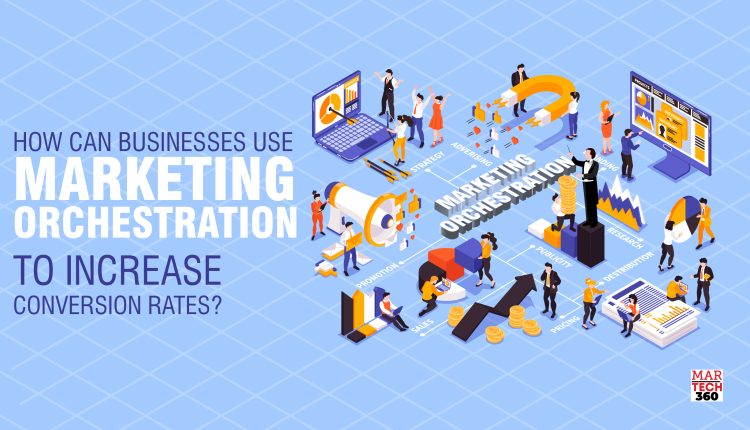Marketing Orchestration! If your mind led to comparing it with a musical orchestra after reading the first two words then you are actually right.
Just like in an orchestra, which is a combination of several musicians and each musician plays an instrument with a different sound, still the outcome is melodious due the harmony coming from perfect coordination.
Marketing orchestration works with the same ideology, the lead or let’s say conductor (the one gesturing in front of the musicians), organizes every other team and channels falling under the marketing funnel. Its major objective is to maintain the workflow of marketing campaigns in harmony to enhance the customer base.
Spur in digital marketing has created the need for marketing orchestration tools and platforms to manage continuously updating data numbers and ways to keep up with new trends as well as maintain a connection with target audience. A study has shown that, on an average 12 out of 13 strategies put forward by B2B marketers are through a digital platform. As a result of smartphones being an integral part of our daily lives, it has become easy to reach a target audience digitally and convert them into potential customers.
Why Are Conversion Rates Key To A Successful Marketing Campaign?
Before getting into its importance, first let’s understand what a conversion rate is. In general conversion rate can be termed as the percentage of users who have completed a desired action such as visiting a website by clicking on an advertisement or completing a survey. It is calculated by using two types of data insights i.e. the total number of users and number of converted users. By dividing the number of converted users by the number of overall audience and converting the result into percentage gives as a conversion rate.
Conversion rates are crucial for a marketing team, because it provides a way to assess the effectiveness of a campaign and compare the performance of a marketing strategy executed by using multiple advertising channels. This information can help marketers and advertisers to understand customer behavior patterns and identify target customers who are more likely to go further down the funnel which can be purchase or application installation.
What Is Marketing Orchestration?
Marketing orchestration can be referred to as the unification of the data gathered from all of a brand’s activities, campaign and other programs across available sources which is marketing channels and sales funnel. This data is utilized to create and offer more relevant, personalized customer experiences. Marketing orchestration tools help to ensure that even separate teams and data collected by them are not pulling in different directions.
For instance, as per the Gartner research, many organizations believe poor data quality to be responsible for an average of $15 million per year in losses. So, that’s why marketing orchestration is important as it focuses on developing coordinated interactions on different marketing channels. It includes insights from email, social media platform, website, newsletter and what not to provide quality data to the teams that will eventually help to create a cohesive customer journey.
A typical marketing orchestration platform offers a centralized system that consists of calendars, progress tracking tools, creative assets, and analytics reporting that helps to execute the marketing strategy seamlessly.
How To Incorporate Account Based Marketing Orchestration?
Delivering the right content to the targeted customer accounts through suitable or say right marketing channel is known as account based marketing orchestration. This process works with the account based approach to run their marketing strategies and campaigns, and also coordinates with the sales team for better outcomes.
Account-based marketing orchestration focuses on the lifecycle of an account which can start from watching a marketing related post on social media to visiting the website by clicking certain links and finally the purchase call.
Common steps followed to incorporate account based marketing orchestration are as discussed below:
- The very first step is to spot the target audience who is more likely to convert into a customer or user, this can be achieved with the help of marketing and sales time.
- In terms of B2B purchases, the number of people involved in the decision making process are usually more than one or two. So, it is important for businesses to expand their marketing involvement by reaching to everyone responsible for the purchase action within an account.
- Consumer engagement is very important for growth, as it provides a way to connect with your target audience through different marketing channels such as email, social media platforms, informational videos and much more. Consumer are most likely
- After developing customer friendly relations with your audience through engagement. It’s easier for businesses to connect with the customer journey and ask for help in terms of feedback. Customer feedback can provide insightful information on how to improve your strategies as well as products.
- It is equally important to thoroughly analyze target accounts. It helps to measure how efficient the marketing strategy and success of an account engagement at different stages up to the funnel.
How Does Marketing Orchestration Work In Practical Terms?
For instance, consider if there is a customer who has just arrived at your website, by clicking an advertisement post on social media. After surfing through your product, the potential customer opts for a sample of certain products. In order to complete this action, they will be required to enter an email address.
As soon as this information data is received by the team the customer is listed into email automation set up which helps to connect with the customer with ongoing campaigns. Moreover, offering memberships only discounts the company leads to encouraging the customer to go forward with making these products or brands a part of their regular life.
Basically, marketing orchestration combines the data from different teams and makes sure that all teams of a company work in coordination. Its ultimate aim is to improve customer journey, which will help to enhance the conversion rate.


Comments are closed.